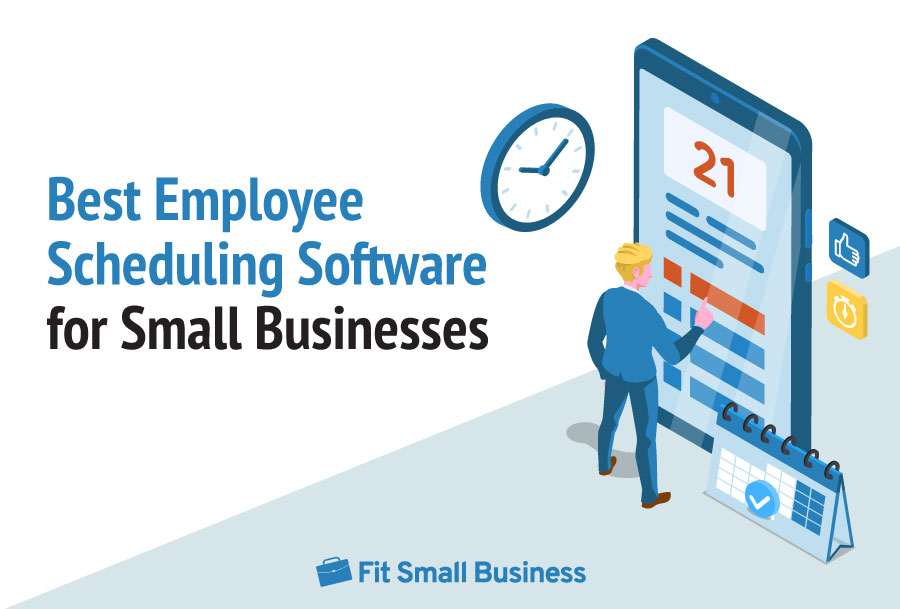

Using a free employee schedule template will save you the time of having to manually create one. You can choose from the employee schedule templates below, depending on your business hours and scheduling pattern (such as daily, weekly, 24/7, and shift), and download them for Excel or Google Sheets.
Daily Schedule TemplateFILE TO DOWNLOAD OR INTEGRATE
Download as Excel Download as Google Doc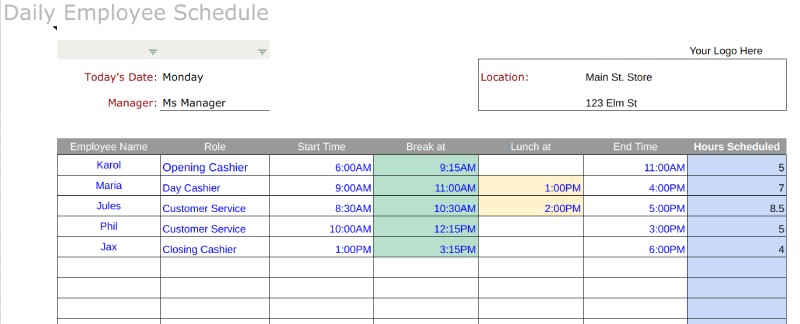
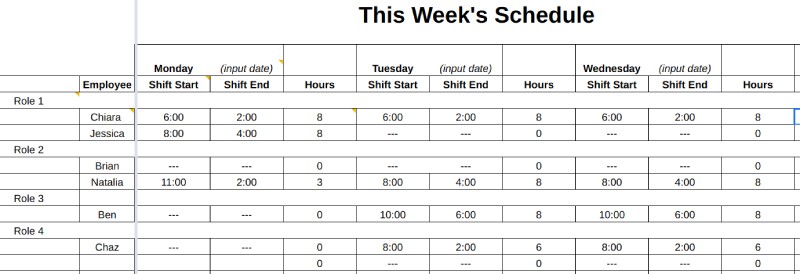
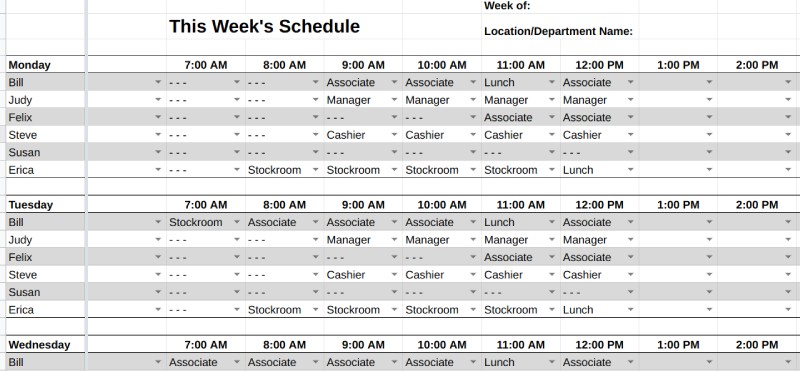
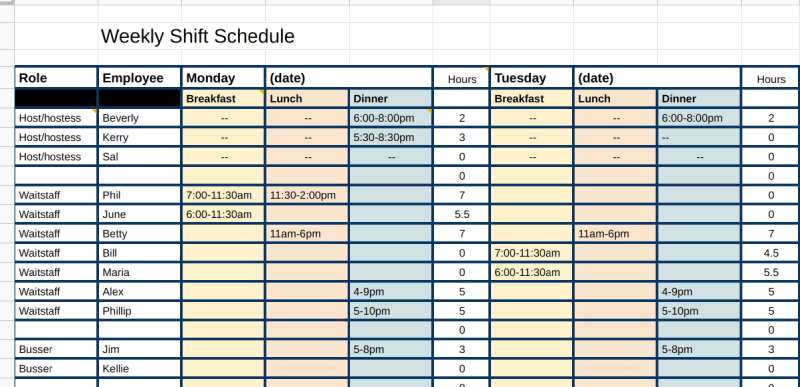
If you’re looking to make employee scheduling easier, we recommend using top-rated scheduling software like Homebase. Its templates help you avoid scheduling overtime and make it easy to see your team’s availability, time off, and scheduling preferences. Also, once you create your schedule, you can replicate it weekly. Homebase offers a free plan for businesses with only one location (and up to 20 employees). Visit Homebase Continue reading for more detailed information on each of our free templates or view our video instructions.
Use this daily schedule when you need to schedule employees day by day, with specific information that they’ll need for each hour or shift. This one-day schedule is great for service businesses that assign employees to specific kinds of work throughout the day and want to specify breaks and lunchtimes. What this daily schedule lacks is a way to show employees which days they’re scheduled to work for the entire week; however, you can add a separate tab in your spreadsheet for each day.

Download Daily Employee Schedule Template
The template will then automatically calculate the number of hours scheduled for all employees based on the values you enter in the final column. Our free template allows you to input up to twelve employees, however, if you have additional employees you can add rows to the bottom.
Use this weekly Google Sheets or Excel employee schedule template if your staff works standard business hours (e.g., a retail or service shop that’s open five to seven days a week). If your business is open on Saturday or Sunday, there’s room to input those hours (Otherwise, you can delete the weekend columns).
This template is a bit more complex than the daily employee schedules template, as it allows you to input each person’s start and end times for an entire week. You’ll be able to see at a glance the total number of hours for which employees are scheduled to work.

The weekly employee schedule template allows you to track your employees’ hours, which helps avoid overtime and ensures that you don’t overschedule or under-schedule your part-time workers. Modify the weekly employee schedule template for work as shown below.
Want to ditch the spreadsheets and automate scheduling at no cost to you? Check out our top picks for free employee scheduling software.
This 24/7 employee schedule can help service businesses like senior care providers, security agencies, or manufacturing firms that operate multiple shifts by keeping track of employees throughout an entire seven-day workweek. It can also ensure that workers aren’t overscheduled and that you have coverage at all times of the day.

For an alternative on-call schedule that focuses on time fill rather than counting hours, visit our On-Call Scheduling article.
This template adds the ability to schedule employees around the clock. It contains a week’s schedule on one spreadsheet. This 24/7 employee schedule template provides you with the ability to indicate the job role of each worker using a drop-down menu. Like the other templates, you can add rows and columns to customize it to your operation.
Because this template is a bit more complex, we’ve provided the four steps you’d need to follow in Google Sheets to customize your job roles:
Steps 1 & 2: Select the range of cells you’d like to change. Then right-click and select “Data validation.”
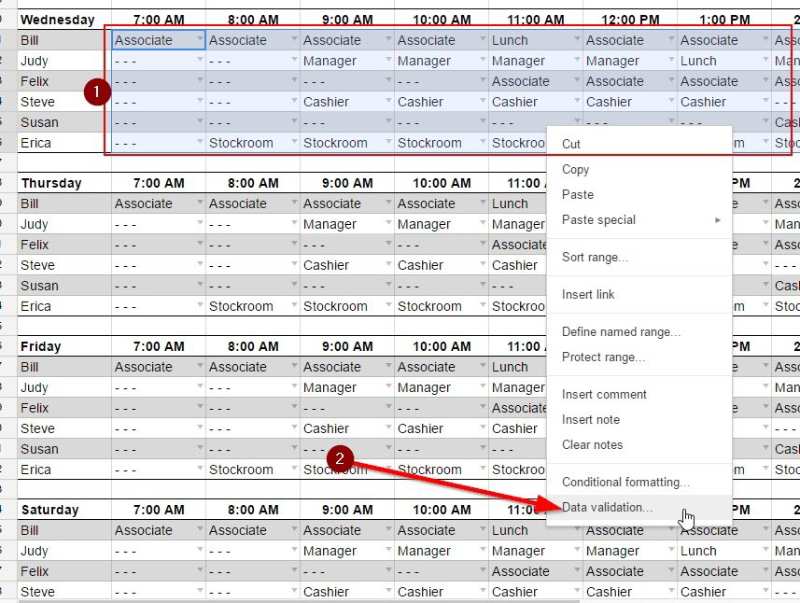
Steps 3 & 4: Criteria should be on “List of Items.” Add the name of each position to the list (separated by a comma). Then, click Save.
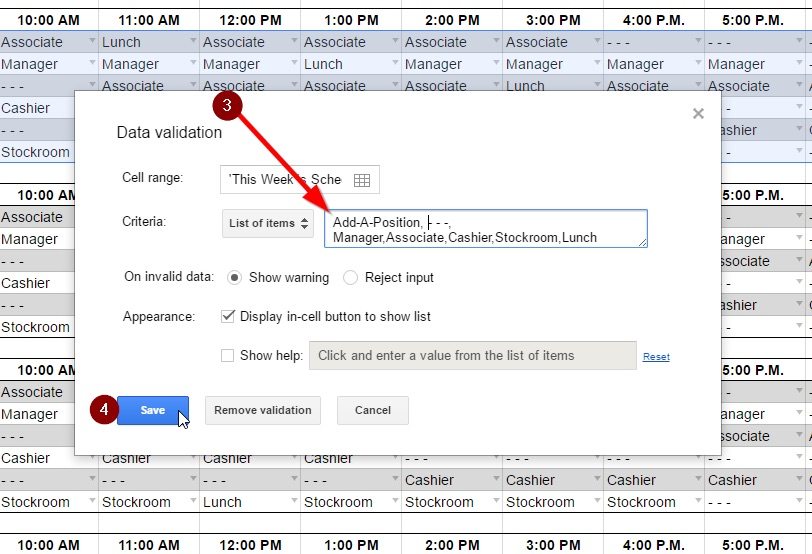
Most retail and foodservice businesses schedule employees around specific times of the day, or shifts. For example, your restaurant is likely to need more staff during lunch and dinner than midafternoon. Likewise, a small tourist shop may be busier in the middle of the day.
This schedule accommodates those shifts easily and allows you to add more people at the times of the day when your business is busier. In addition, you can add details for each employee shift, such as job role or assigned workstation.

You can change the names of the job roles by typing in each cell, or you can modify the names of your shifts by replacing the Breakfast, Lunch, and Dinner text. You can also customize your colors, add rows for additional employees, and add columns for additional shifts—for instance, scheduling only four hours per shift.
To modify the shift schedule template follow the below:
At a minimum, your Google Sheets or Excel employee schedule template should have information on when your workers are scheduled and what position they’ll be working.
Your template for employee schedule should include:
If you include the information above, you’ll have an employee schedule template that can accommodate the needs of your small businesses in one location with a small team. Once your team grows or needs to schedule workers across multiple locations, you may need scheduling software, such as Homebase—which ranks number one in our best employee scheduling software guide.
If you need assistance scheduling your workers, check out our article on how to schedule employees.Once you have created your schedules, it’s important to share them with your employees so they know when to report to work. Here’s how to share a work schedule using Google Sheets:
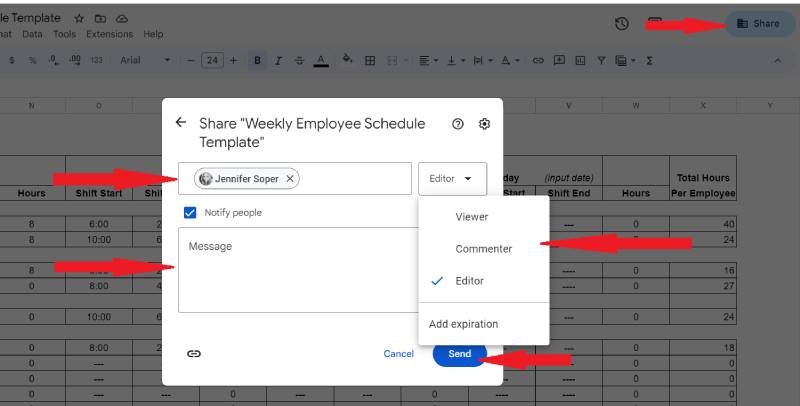
By sharing access to your employee schedule, your team may be happier with their work hours while you maintain control over the final schedule. You’ll do this without the clutter and confusion of printouts, emails, or post-its, and everyone will have access to the schedule from any desktop, tablet, or smartphone. You can also make the schedule editable, allowing your employees to add their names to the shifts they want.
Employee scheduling software and apps are a great alternative to using manual employee scheduling templates. In addition, many have free plans: